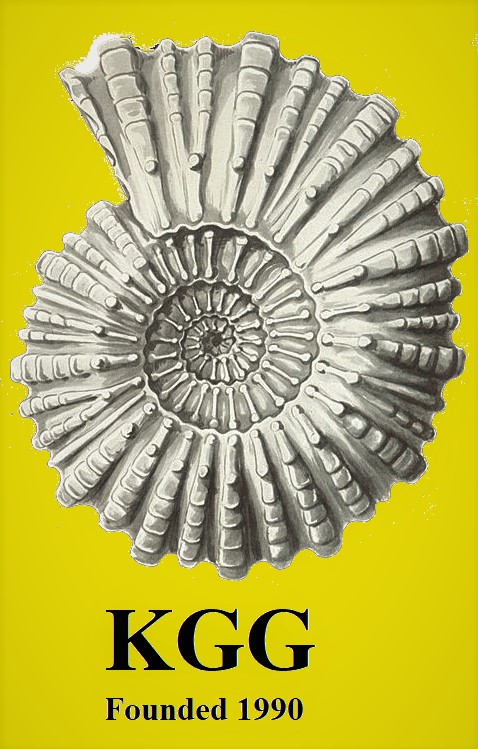
|
KENT GEOLOGISTS' GROUPMinerals |

|
What is a Mineral?
The definition of most relevance to
mineral collectors is:-
"A mineral is a naturally occurring inorganic
chemical compound, usually crystalline, that is the
result of geological processes."
This definition excludes man-made products such as
synthetic gems or smelter by-products and organic
materials such as amber. However classifications
themselves are man-made for man's convenience; so
don't let a mere definition stop you from collecting
what appeals to you.
The Earth's Structure
The Earth consists of a molten core,
predominantly iron, surrounded by a mantle.
Surrounding the mantle is the outermost least dense
layer of the Earth, the crust. The crust is divided
into continental crust (the land masses) and the
oceanic crust comprising the oceans and the
underlying rock.
The most common elements in the Earth, in decreasing
order of abundance, are oxygen, silicon, aluminium,
iron, calcium, sodium, potassium and magnesium. The
percentages differ slightly between core, mantle and
crust. These are the dominant constituents of rock
forming minerals with about 90% of the Earth's crust
being silicates (compounds of silicon and oxygen plus
metals). It is no surprise, therefore, that common
minerals are combinations of these elements; the most
abundant being silicates.
How are minerals formed?
Minerals are formed when molten
magma from the Earth's core rises through the mantle
towards the surface and cools. Minerals in the magma
crystallise out at different temperatures. Other
minerals are formed by reaction with chemicals in the
surrounding rock.
The minerals thus formed may undergo further change
as a result of reaction with water and oxygen near
the Earth's surface. These are called 'supergene'
products from the ancient greek for 'created from
above'.
To understand more about minerals and how they are
formed we need to consider What is Matter?; then
look at Atoms, Electrons and Compounds,
the foundations of chemistry and mineralogy. This
background knowledge may then help us to decide Why
We Should Collect Minerals.. If this does not tempt
you then have a look at some mineal specimens in the
Mineral Gallery
| What is Matter? | Atoms, Elements and Compounds | Why Collect Minerals? | Mineral Gallery |